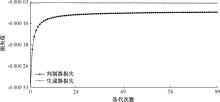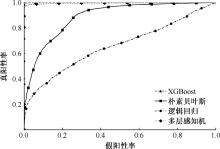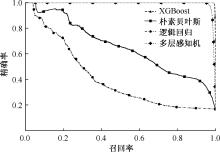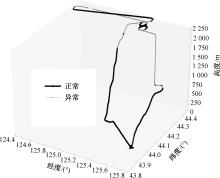| [1] |
暴佳伟, 田小平, 刘宇娜, 等. ADS-B安全问题研究综述[J]. 现代防御技术, 2022, 50(5):28-35.
doi: 10.3969/j.issn.1009-086x.2022.05.005
|
|
BAO Jiawei, TIAN Xiaoping, LIU Yuna, et al. Summary of research on security issues of ADS-B protocol[J]. Modern Defence Technology, 2022, 50(5): 28-35.
|
| [2] |
COSTIN A, FRANCILLON A. Ghost in the air (traffic): on the security of ADS-B[C]. Proceeding in 21st USENIX Security Symposium (USENIX Security 12), 2012: 1-16.
|
| [3] |
MUELLER R K. Quality of reported NACP in surveillance and broadcast services systems[C]. Proceeding in 28th IEEE/AIAA Digital Avionics Systems Conference, 2009: DOI: 10.1109/DASC.2009.5347431.
|
| [4] |
沈笑云, 唐鹏, 张思远, 等. ADS-B统计数据的位置导航不确定类别质量分析[J]. 航空学报, 2015, 36(9): 3128-3136.
doi: 10.7527/S1000-6893.2015.0004
|
|
SHEN Xiaoyun, TANG Peng, ZHANG Siyuan, et al. Quality analysis of navigation uncertain category for position based on ADS-B statistical data[J]. Acta Aeronautica et Astronautica Sinica, 2015, 36(9):3128-3136.
doi: 10.7527/S1000-6893.2015.0004
|
| [5] |
LI Nisi, LIN Lin, LI Fan. ADS-B anomaly data detection using SVDD-based LSTM encoder-decoder algorithm[C]. Proceeding in 3rd IEEE International Conference on Civil Aviation Safety and Information Technology,2021:1295-1300.
|
| [6] |
王振昊, 王布宏. 基于SVDD的ADS-B异常数据检测[J]. 河北大学学报:自然科学版, 2019, 39(3):323-329.
|
|
WANG Zhenhao, WANG Buhong. ADS-B anomaly data detection based on SVDD[J]. Journal of Hebei University: Natural Science Edition, 2019, 39(3):323-329.
|
| [7] |
LUO Peng, WANG Buhong, LI Tengyao, et al. ADS-B anomaly data detection model based on VAE-SVDD[J]. Computers & Security, 2021, 104: DOI: 10.1016/j.cose.2021.102213.
|
| [8] |
丁建立, 邹云开, 王静, 等. 基于深度学习的ADS-B异常数据检测模型[J]. 航空学报, 2019, 40(12):167-177.
|
|
DING Jianli, ZHOU Yunkai, WANG Jing, et al. ADS-B anomaly data detection model based on deep learning[J]. Acta Aeronautica et Astronautica Sinica, 2019, 40(12):167-177.
|
| [9] |
刘浪, 时宏伟. 基于注意力机制的CNN-LSTM的ADS-B异常数据检测[J]. 计算机系统应用, 2023, 32 (4): 94-103.
|
|
LIU Lang, SHI Hongwei. ADS-B anomaly detection based on attention mechanism for CNN-LSTM[J]. Computer Systems & Applications, 2023, 32(4):94-103.
|
| [10] |
ÇEVIK N, AKLEYLEK S. SoK of machine learning and deep learning based anomaly detection methods for automatic dependent surveillance-broadcast[J]. IEEE Access, 2024, 12:643-662.
|
| [11] |
SABUHI M, ZHOU Ming, BEZEMER C P, et al. Applications of generative adversarial networks in anomaly detection: a systematic literature review[J]. IEEE Access, 2021, 9:3-29.
|
| [12] |
YUE Meng, ZHENG Han, CUI Haoran, et al. GAN-LSTM-based ADS-B attack detection in the context of air traffic control[J]. IEEE Internet of Things Journal, 2023, 10(14): DOI: 10.1109/jiot.2023.3252809.
|
| [13] |
郑圣彬, 谢加良, 张东晓. 基于LSTM-WGAN的时间序列数据异常检测[J]. 福建师范大学学报:自然科学版, 2024, 40 (2): 36-45.
|
|
ZHENG Shengbin, XIE Jialiang, ZHANG Dongxiao. Time series data anomaly detection based on LSTM-WGAN[J]. Journal of Fujian Normal University: Natural Science Edition, 2024, 40(2): 36-45.
|
| [14] |
李佳晟. 基于多元特征的ADS-B异常检测关键技术研究[D]. 成都: 电子科技大学, 2023.
|
|
LI Jiasheng. Research on key technologies of multivariate feature based ADS-B anomaly detection[D]. Chengdu: University of Electronic Science and Technology of China, 2023.
|
| [15] |
官成功, 高勇. 基于生成对抗网络的ADS-B信号降噪[J]. 通信技术, 2021, 54 (3): 568-574.
|
|
GUAN Chenggong, GAO Yong. Generative adversarial nets for ADS-B signal denoising[J]. Communications Technology, 2021, 54(3):568-574.
|
| [16] |
KIM C, PARK S, HWANG H J. Local stability of Wasserstein GANs with abstract gradient penalty[J]. Neural Networks and Learning Systems, 2022, 33(9):4527-4537.
|
| [17] |
CHEN Shichuan, ZHENG Shilian, YANG Lifeng, et al. Deep learning for large-scale real-world ACARS and ADS-B radio signal classification[J]. IEEE Access, 2019, 7:256-264.
|
| [18] |
CHEN Tianqi, GUESTRIN C. XGBoost: a scalable tree boosting system[C]. Proceedings of the 22nd ACM SIGKDD International Conference on Knowledge Discovery and Data Mining, 2016: 785-794.
|
| [19] |
MANESH M R, KAABOUCH N. Analysis of vulnerabilities, attacks, countermeasures and overall risk of the automatic dependent surveillance-broadcast (ADS-B) system[J]. International Journal of Critical Infrastructure Protection, 2017,19:16-31.
|
| [20] |
ALI B S, TAIB N A. A study on geometric and barometric altitude data in automatic dependent surveillance broadcast (ADS-B) Messages[J]. The Journal of Navigation, 2019, 72(5):40-58.
|
| [21] |
周志华. 机器学习[M]. 北京: 清华大学出版社, 2016:44-56.
|
| [22] |
SHERWIN J S, CHARTIER J. Parameter optimization of logistic regression classifiers[J]. BMC Neuroscience, 2013, 14(S1): DOI: 10.1186/1471-2202-14-S1-P62.
|
| [23] |
周长春, 陈勇刚. 基于人工神经网络的城市火灾事故的预测方法[J]. 中国安全科学学报, 2005, 15 (5):21-23.
|
|
ZHOU Changchun, CHEN Yonggang. Prediction method of city fire accidents based on artificial neural network[J]. China Safety Science Journal, 2005, 15(5):21-23.
|
| [24] |
王旭. 人工神经元网络原理与应用[M]. 沈阳: 东北大学出版社, 2000:20-45.
|
| [25] |
徐翔, 陈龙, 李松阳, 等. 航空发动机燃烧室机匣烧穿火焰特性试验研究[J]. 清华大学学报:自然科学版, 2024, 64(6):984-991.
|
|
XU Xiang, CHEN Long, LI Songyang, et al. Experimental study on flame characteristics of combustor casing burn-through in aero-engine[J]. Journal of Tsinghua University: Science and Technology, 2024, 64(6): 984-991.
|



















